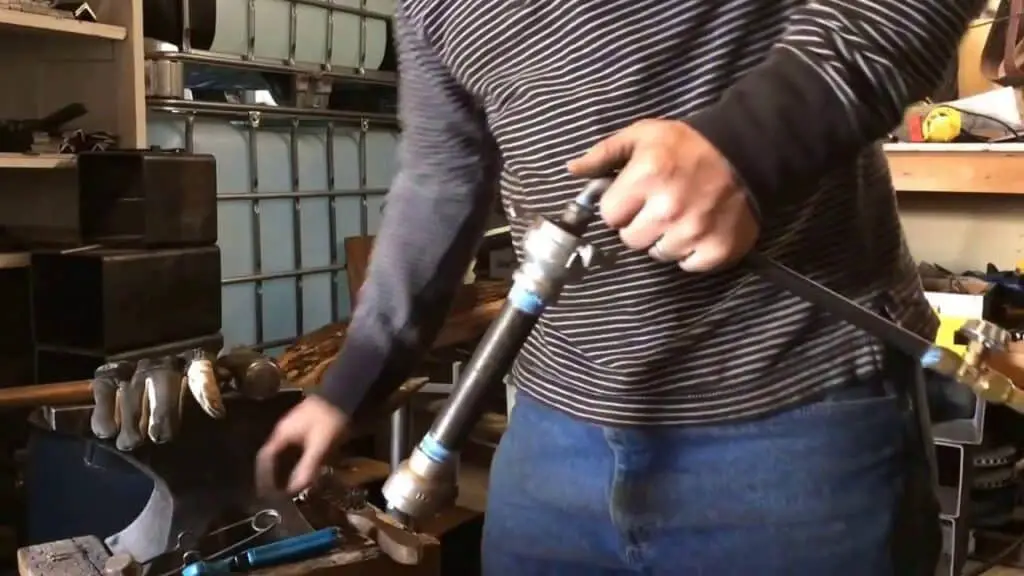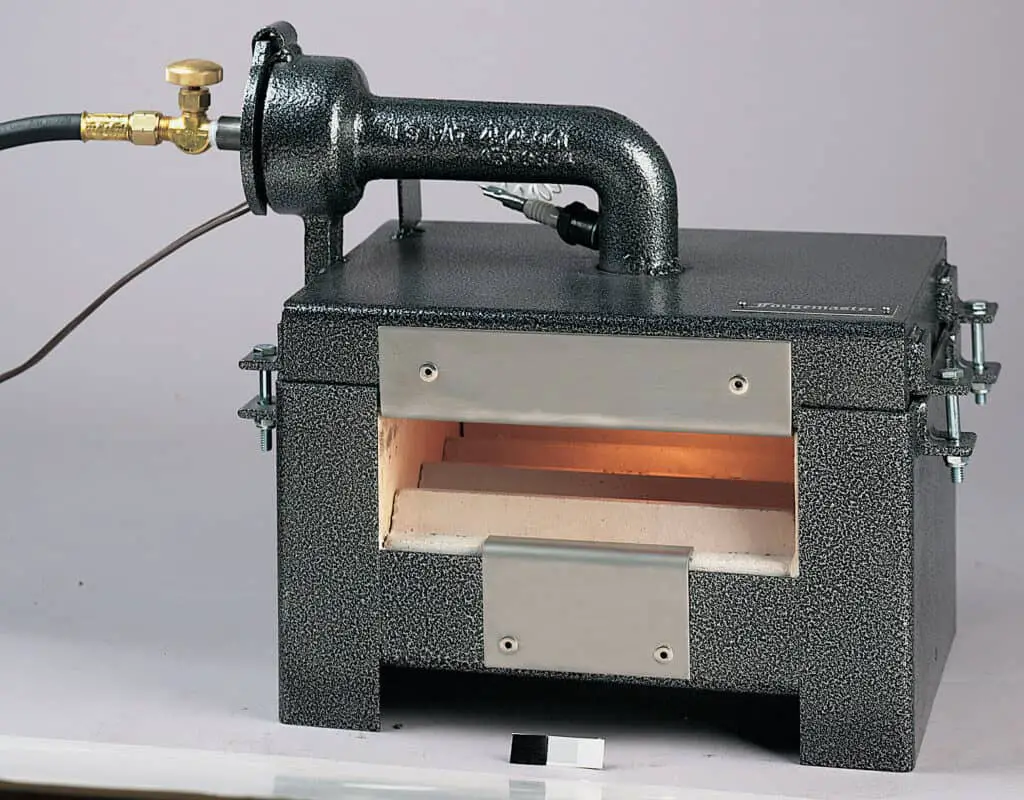Forge welding has always been an area with a lot of interesting innovations and techniques. You are now here with a particular nagging question that has always been lurking somewhere in your mind. Aren’t you?
Then what are you waiting for? Read further…
Forge welding is one of the most traditional ways of welding where the whole process is done in the simplest manner possible. There are now various gas forges that are available in the market.

Over the years, gas burners have become a popular choice for welding. But there often comes a question of whether a single burner will be enough to heat the metals for them to be forge welded?
No, it is not easily possible to forge weld using a gas forge with a single burner as the welding heat required for forge welding cannot be reached with the particular gas capacity of one burner. Yet, it can become possible with certain modifications and additions to the conventional single burner gas forge.
Let’s see more about this…
Is a single burner gas forge capable of forge welding?
Let alone single burner gas forge, people have been often doubtful whether gas forges by themselves are suitable for forge welding. Now, this is a question that has a strong reason behind it. Gas forges, especially the traditional ones are poorly insulated and ventilated.
They could never reach the welding heat required for forge welding. For forge welding, a temperature high enough to make the metal glow is needed. But, it changed with the new more sophisticated ones as they began to come with more sturdiness and proper ventilation.

The burners in the gas forge increase the presence of pressurized gas thereby creating the environment for proper heating. Still, a single burner in most cases might not give the heat required for forge welding. The amount of heat produced inside a gas forge with a single burner even in the developed ones, cannot be enough for forge welding.
Yet, there are opinions from experts and people who are into welding that if pushed to an extent with insulating wool, you might be able to create that temperature needed for forge welding. But, this is something that you would have to go that extra mile for.
And this is where the answer to the question becomes YES it is possible to make a single burner forge ready to forge weld if you built your own with a propane gas attachment that can have that much capacity and the inside of the gas forge need to have a good ITC coating.
For example, a gas forge with a single burner with ITC100 coating and a gas range of 13-15 can easily create the atmosphere for forge welding.
So it is possible if you give your extra effort and make a customized gas forge without going for the gas forges with single burners available in the market.
Pros and cons of gas forges
By now, you are aware of how much these single burners gas forges are capable of forge welding, it is time to see what are the pros and cons of using gas forges.
Pros
1.) A clean environment
Yes, gas forges are always much less troublesome to clean. Unlike unconventional methods, these have enclosures, and therefore whatever that burns and is often contained inside these walls. This device keeps the whole process clean and crisp without creating much of a fuss.
2.) Easy to control
One huge advantage of using gas forge is that you can set the heat to the limit you want. You don’t have to worry whether the heat will be more or less. You can simply study the heat and determine what the level that you would need is.
Once the metal is placed inside, you can take it out after the needed time for it to be ready to weld. Therefore, maintaining a fire is never a problem when it co
3.) No need of a chimney
Gas forges do not need a chimney, unlike other furnaces. Usually forges come with a chimney as there is always a need to let the smoke out. That said, you cannot completely rule out the possibility of having ventilation for the forge.
As it is a device that does a lot of heating, ventilation becomes a necessity, and gas forges have their way to vent the smoke out without chimneys.
4.) Easily available
Gas forges are never a rare thing anymore. You can find them easily in the market. You just have to decide which one suits your work better.
As you already know there are many types of gas forges there in the market including those with two or three burners; others with different types of burners.
There are a lot of specifications that you ought to align with the work you are about to do. This would help you to complete the work smoothly.
5.) Easy to learn
These gas forges with burners are not that complicated and therefore, their working is something that you can pick up easily.
Unlike their counterparts, once you understand the mechanism with which they work, using them to forge weld will just be like any other daily task.
6.) No need for maintenance
Gas forges are easy to maintain. We already said how clean they can stay throughout the process. As the propane gas tubes are maintained in a well-closed manner, the smoke and debris created will not be a nuisance to the worker.
Moreover, you should not have to be there all time while the metal is inside. Once placed, you just wait and do not need to maintain the work by your manual effort. Hence, maintaining these gas forges will never be a headache for you.
Cons
1.) Misery of heat
Gas forges tend to release so much heat that it might become difficult to stand beside them especially during summers. Single burners are comparatively better than others in this area as the gas used and heat created is less than two or three burners.
The exact reason why we raise the question of whether forge welding is possible with single burner gas forges. If it is cold outside, and then let’s say it would be a comfortable and cozy experience to work with these but it is hot, then you are in for something very uncomfortable.
2.) Not versatile
Now, this depends on the manufacturers. Yet, in some gas forges the opening can be a little smaller for certain pieces of metal.
Unless you create a gas forge for bigger ones, these metal pieces cannot be forged welded with gas forges. These are therefore not that versatile in terms of applicability.
3.) Not reaching the heat
Yes, gas forges at times indeed have this problem as well. It happens with low-end gas forges and not commercial ones. If you take them to higher altitudes, the lack of oxygen can primarily cause this issue.
4.) Unstable forge lining
Yes, welding flux can result in an unstable forge lining that might create trouble for you. This problem will eventually demand itself to be rectified.
Yet if you go for a bigger size, the problem of small openings and obstacles created by unstable forge lining can be avoided to an extent.
Comparison with traditional coal forges
This table will show how these gas forges are different from coal forges used for forge welding.
| Areas | Gas forge | Coal forge |
| Cleanliness | Can be kept clean throughout the process | Can be messy and smokey |
| Sound or Noise | Can be noisy | Does not create much noise |
| Pressurized Gases | Required | Not required |
| Expertise | Can be easily learned | Need the expertise to run |
| CO hazard | High CO hazard | Less CO hazard |
| Neighbour friendly | Yes | No |
| Suitable for forge welding | Not all gas forge is suitable | Are suitable for forge welding |
So that’s it, folks!
Hope this article gave you an idea about single burner gas forges and forge welding.
Read our other blogs to see more such amazing stuff!






